The Definitive NAMM 2015 Saxophone Roundup – Part 1
Note for Mobile Users: Normally it’s not a big deal, but for this particular series of articles, I thought I’d mention – you’ll be seeing some ad banner images mixed in with the product images in this article, so keep in mind that any image with the word “Sponsored” directly above it is an ad and not part of the article (will try to think of a more elegant solution for the future).
Introduction
As was the case with the 2014 NAMM show, (in case you’re new to the term,”NAMM” stands for North American Music Merchandisers), the 2015 NAMM show was yet another year filled with some great new products ranging from saxophones to mouthpieces to ligatures, and more.
This NAMM show in particular, I test played some new and existing model saxophones that have been improved upon and customized even further to better suit the player’s needs. In my opinion, I am seeing more saxophone manufacturers offering their version of a “vintage” saxophone in hopes of attracting those players who are looking to replace or find another cost alternative to their Selmer’s, Conn’s, King’s, etc.
I did my best this year to visit as many booths as possible to test-play some of the latest gear as well as touch base with exhibitors, saxophone artists, and friends. I found that this year’s NAMM show, in comparison with last year’s show, had a couple new exhibitors I had not seen or heard of before. I will be reviewing and revisiting some of the products I had a chance to try at the 2014 NAMM show as well as discussing new products that have recently been launched by various manufacturers for 2015.
The products, in no particular order…
Yamaha Custom 82Z II
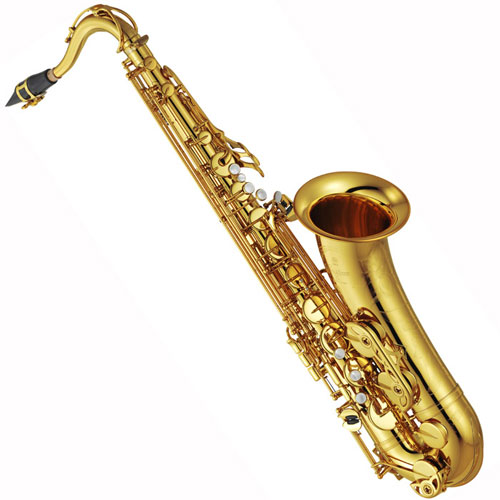
I had a chance this year to head over to the Yamaha booth and test play the Yamaha Custom 82ZII. I have played the original Yamaha Custom 82Z and found that overall it was a well-built professional tenor with a wide tonal color that’s sought after and preferred by many jazz musicians. I believe the Yamaha Custom 82ZII has made some enhancements to the existing design that makes it an even better professional model saxophone offered by Yamaha.
One of the major changes to this saxophone is the one-piece bell that is said to improve the low end response. Other changes I saw were the domed metal resonators instead of the plastic ones, which I found enhanced the overall projection, and finally, there was the new V1 neck, which has a wide bore taper allowing great flexibility and a very responsive saxophone.
All in all, I found the enhancements made to the Yamaha Custom 82ZII brought it a step closer to attracting those players (including myself) who seek the response and tonal colors of the vintage saxophones of the past with the well-constructed and laid out key-work of a modern horn, which Yamaha has clearly succeeded in doing. I am looking forward to future enhancements on the Yamaha Custom 82ZII.
More info:
http://usa.yamaha.com/products/musical-instruments/winds/sax/altosax/yas-82z_02/
Find it on Amazon.com:
Yamaha YTS-82ZII Custom Z Tenor Saxophone Lacquered
Ishimori Wood Stone Tenor saxophone “Eric Alexander Model”
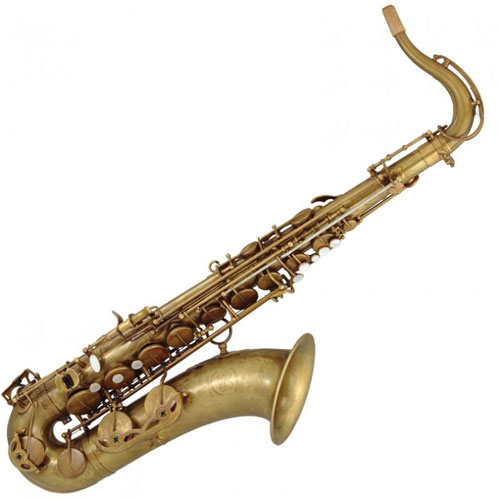 After test playing the Ishimori Wood Stone tenor saxophone at the 2014 NAMM show, I stopped by the booth again and tried out the new “Eric Alexander” Wood Stone tenor saxophone, which I believe is still being worked on by Ishimori with Eric’s feedback.
After test playing the Ishimori Wood Stone tenor saxophone at the 2014 NAMM show, I stopped by the booth again and tried out the new “Eric Alexander” Wood Stone tenor saxophone, which I believe is still being worked on by Ishimori with Eric’s feedback.
The Eric Alexander Wood Stone tenor saxophone was one of the best tenor saxophones I tried at the show and many artists as well as players agreed with me. Ishimori told me that the neck is different on this model as well as a couple other features. The Eric Alexander Wood Stone tenor saxophone was free-blowing, warm, resonant, projected nicely, and had the right amount of resistance (not in a bad way) where you could really shape the sound to your preference. I found the key-work to be incredibly comfortable under my fingers and the spring tension to not be stiff, but just the right amount to where it felt like a broken-in VI or SBA.
I can tell that Ishimori puts many hours into each Wood Stone saxophone, and the consistency from horn to horn is absolutely top notch. I would highly recommend the Eric Alexander Wood Stone tenor saxophone to players who are really in the market for a modern “vintage” horn. I hope to see more saxophones adopt many of the characteristics that this horn exhibits.
More info:
http://www.wood-stone.jp/product-list/49
CE Winds Mouthpieces
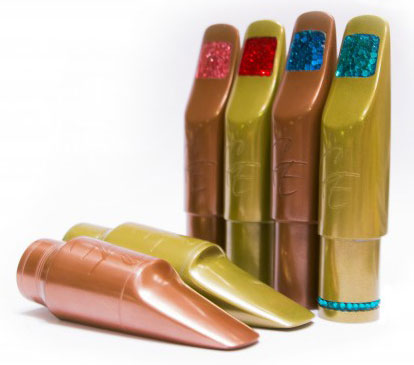 CE Winds has become more and more popular with the introduction of their Tribute series mouthpieces. These mouthpieces are based on some of the most sought-after and played mouthpieces such as the vintage Otto Links, Guardala’s, Meyer’s, Selmer’s, Vandoren’s, Dukoff’s, and the list goes on.
CE Winds has become more and more popular with the introduction of their Tribute series mouthpieces. These mouthpieces are based on some of the most sought-after and played mouthpieces such as the vintage Otto Links, Guardala’s, Meyer’s, Selmer’s, Vandoren’s, Dukoff’s, and the list goes on.
Last year, I had a chance to try the Legend I, Legend II, The Sig, and the Studio Sonic for tenor saxophone. My favorite mouthpiece was “The Sig” which I believe is due to my current setup being an old Otto Link Slant Signature. This year, I had a chance to revisit the new Florida model mouthpiece as well as “The Sig” model made out of hard rubber as well as a new material called “brassite.” “Brassite” is a new material that CE Winds is using which combines the attributes of brass with the durability of resin. I have to say that I was impressed by the material and found this “brassite” material to offer an enhanced projection over hard rubber, but at the same time I was able to maintain a warm and resonant core which I prefer. I liked playing “The Sig” mouthpiece out of all the models and thought the “brassite” version of “The Sig” gave the mouthpiece some additional projection while also making the mouthpiece even more free-blowing than it already was. I highly recommend checking out the various mouthpieces CE Winds makes, which are all hand-finished in Fort Myers, Florida.
More Info:
http://www.cewinds.com
Rampone & Cazzani “Two Voices” Saxophone
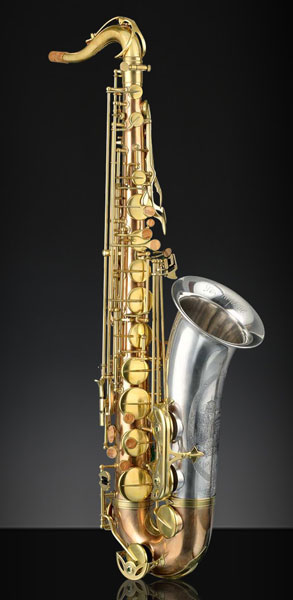 This was the first year I saw Rampone & Cazzani at the NAMM show. In addition, this is my first time actually trying a Rampone & Cazzani saxophone because there are only a few dealers who carry them currently in the United States. The “Two Voices” tenor is an interesting horn because the bell is sterling silver, the body is bronze, and the neck is brass. The wooden key touches were a nice, not to mention, highly unique detail. Also of note was the detailed engraving on the front of the bell, depicting church towers .
This was the first year I saw Rampone & Cazzani at the NAMM show. In addition, this is my first time actually trying a Rampone & Cazzani saxophone because there are only a few dealers who carry them currently in the United States. The “Two Voices” tenor is an interesting horn because the bell is sterling silver, the body is bronze, and the neck is brass. The wooden key touches were a nice, not to mention, highly unique detail. Also of note was the detailed engraving on the front of the bell, depicting church towers .
I found the combination of the sterling silver, bronze and brass to produce a warm, resonant, free-blowing sound. Claudio also showed me various necks they make and how some necks had a more direct sound while others had a more spread sound. The overall ergonomics on this tenor and other Rampone & Cazzani saxophones were quite different from other saxophone manufacturers saxophones I test played at NAMM. The ergonomics were not similar to a Selmer, King, Conn, etc. I found the key layout felt very compact in the lower register and when you played chromatically or in the upper register the key layout felt a bit more distant. Overall, the sound, intonation, and appearance on the “Two Voices” tenor was unique and I can see why certain players have gravitated towards this model.
More info:
http://www.ramponecazzani.com/eng/r1.html
Lupifaro Platinum Saxophones and Reeds
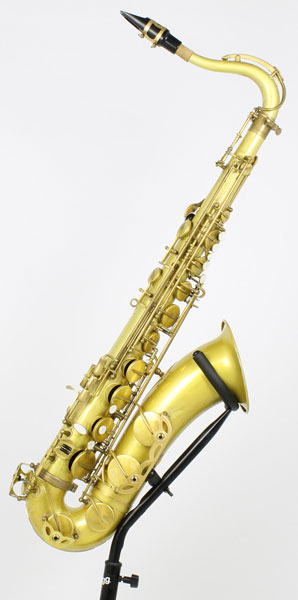
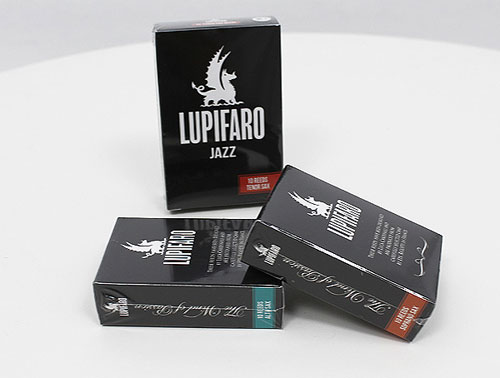 I was glad to see that Lupifaro attended the 2015 NAMM show and brought saxophone artists Chad Lefkowitz-Brown as well as Cameron Wallis, who are both great saxophonists. The Platinum line of saxophones seemed to be popular at the Lupifaro booth, and many players found that the overall sound, intonation, and action was great. I enjoyed playing the Lupifaro Platinum tenor because it seems highly influenced by the Selmer Mark VI, and really focuses on the basic components that make a saxophone great.
I was glad to see that Lupifaro attended the 2015 NAMM show and brought saxophone artists Chad Lefkowitz-Brown as well as Cameron Wallis, who are both great saxophonists. The Platinum line of saxophones seemed to be popular at the Lupifaro booth, and many players found that the overall sound, intonation, and action was great. I enjoyed playing the Lupifaro Platinum tenor because it seems highly influenced by the Selmer Mark VI, and really focuses on the basic components that make a saxophone great.
In addition, the Lupifaro Classic and Jazz reeds I use quite often because it’s Rigotti cane which I have always found to be of great quality and consistency, but with Luca’s (the saxophone creator’s) design. For further detail on the Lupifaro Platinum line as well as Lupifaro reeds check out one of my previous in-depth reviews.
More info:
http://www.lupifaro.com
Silverstein Ligature and Light
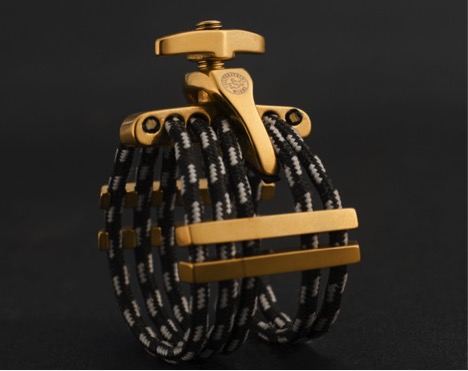
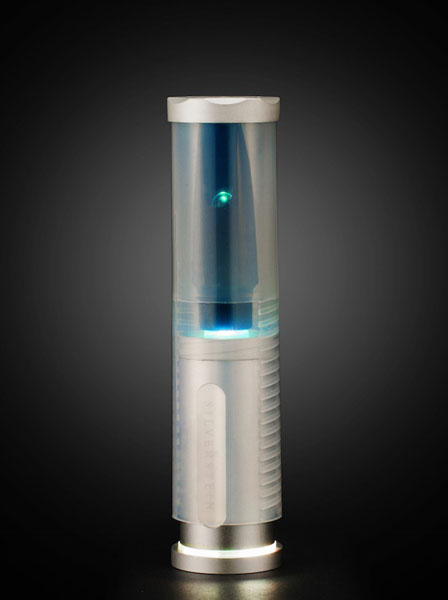 Over the past few years, the Silverstein ligatures have become one of the most popular ligatures I have seen and used widely by many players. I had a chance to stop by the Silverstein booth this year and find out more about these ligatures.
Over the past few years, the Silverstein ligatures have become one of the most popular ligatures I have seen and used widely by many players. I had a chance to stop by the Silverstein booth this year and find out more about these ligatures.
The Silverstein Ligature has various models such as brushed silver, carbon black, etc. I found the Silverstein ligature, like just a few other ligatures on the market, did not hinder the vibration of the reed whatsoever. Plus, the enhancements to this ligature in terms of improving how it sits on your mouthpiece, as well as its unique fine-tuners do demonstrate how this ligature can enhance one’s overall sound.
The materials and craftsmanship are of very high quality, and the new ligature they introduced called the Cryo4 Gold Silverstein Ligature was my favorite Silverstein Ligature at the show. This model in particular goes through a cryogenic treatment which I have seen done similarly to various Yamaha and Forestone saxophones where the alloy is chilled to -300F. The overall effect of this cooling is that it allows the sounds waves to travel faster without loss, resulting in a more refined sound.
Before leaving the Silverstein booth I had a chance to see a device I have never seen designed for the saxophone called “The Light”. The Light is a UV and Ozone sanitizer for your mouthpiece and instrument. For those players looking to keep their saxophone and mouthpiece odorless and clean might want to take a look at this device. You can sanitize any piece of equipment that will fit in it (ligature, reeds, etc.), and this device uses a rechargeable battery which has a built-in USB port. Within the coming year, I hope to do an in-depth review on The Light as well as the Silverstein ligature, as these are some of the most innovative ideas I have seen for saxophone accessories in a long time.
More Info:
http://www.silversteinworks.com
Find it on Amazon.com:
Silverstein Works Classic Silver Ligature Medium/Small Clarinet/Alto Sax
Claude Lakey Compass Ligature
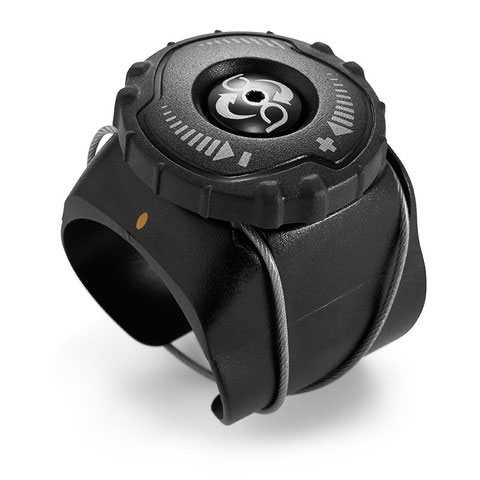 Claude Lakey has made mouthpieces for many years. Just recently, Claude Lakey came out with a ligature called the “Compass” Ligature. This year, I was able to try the Compass Ligature after hearing many positive reviews from dealers as well as music educators.
Claude Lakey has made mouthpieces for many years. Just recently, Claude Lakey came out with a ligature called the “Compass” Ligature. This year, I was able to try the Compass Ligature after hearing many positive reviews from dealers as well as music educators.
What I liked about the Compass Ligature is you can use this ligature on most soprano, clarinet, alto, tenor and baritone mouthpieces, which is a great cost savings for students as well as advancing musicians. I found the Compass Ligature was easy to adjust as well as fit snuggly on my hard rubber Otto Link mouthpiece. In terms of sound, I found that the Compass Ligature allowed the reed to vibrate freely and was quite neutral compared to other ligatures where you might gain some additional brightness or darkness to your sound. I do recommend putting the Compass Ligature on the mouthpiece first and then placing your reed between the ligature and mouthpiece. The overall quality and price for this ligature will make it an option for a beginning student all the way up to a professional.
More info:
http://www.claudelakey.com
Find it on Amazon.com:
Claude Lakey Saxophone Compass Ligature
Horae Saxophones
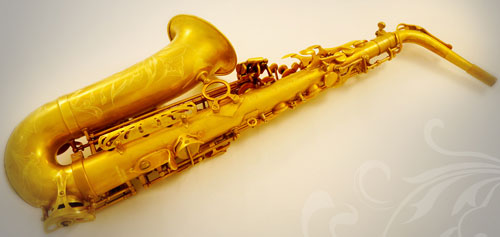 I believe this is the first year that Horae has exhibited their saxophones at the NAMM show. After speaking with Starder and his brother who own the company, I found out that they came to develop their line of saxophones by purchasing many vintage saxophones such as a Selmer Mark VI, Buffet S1, Buescher “True Tone”, Conn “Chu Berry”, and the King Super 20 and studying the benefits of each horn.
I believe this is the first year that Horae has exhibited their saxophones at the NAMM show. After speaking with Starder and his brother who own the company, I found out that they came to develop their line of saxophones by purchasing many vintage saxophones such as a Selmer Mark VI, Buffet S1, Buescher “True Tone”, Conn “Chu Berry”, and the King Super 20 and studying the benefits of each horn.
When I first saw the Horae saxophones, they reminded me, aesthetically, of other Taiwanese brands, but the front F key design was something I had never seen before. When I played the dark lacquer tenor, I found the saxophone to respond well throughout the entire range of the horn. The intonation and sound overall was good and the horn felt comfortable under my fingers. I would say that the Horae saxophone had more Mark VI like qualities in terms of key layout and overall look. Although I found the design of the front F key to be a bit odd, it worked well when playing up into the altissimo. With so many new brands coming into the market, I would keep my eye on Horae saxophones because the founders seem very dedicated, and are constantly looking to enhance their existing models. Overall one of the better new saxophones that have come out recently, and my only recommendation would be to remove “The Ultimate Playing Pleasure” engraved on the side of the saxophone.
More info:
http://horaewinds.com [Sorry(!), but this web page has disappeared since the original publication of this article]






